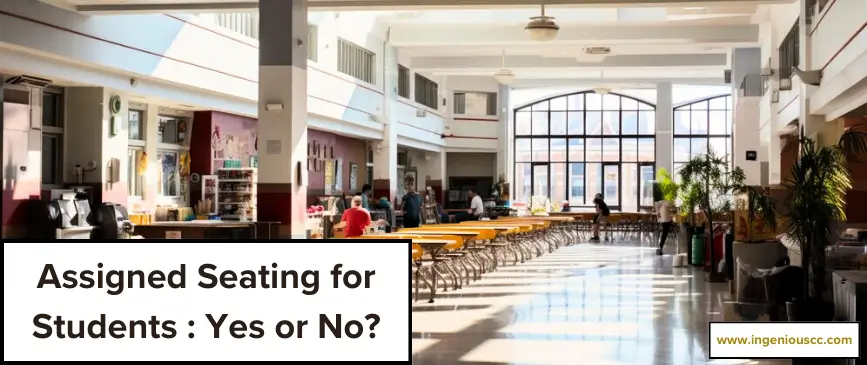Introduction
A positive school culture lays the foundation for a thriving educational environment. It fosters a sense of belonging, promotes academic success, and enhances student well-being. Building a positive school culture is a collaborative effort that involves administrators, teachers, staff, students, and parents. When everyone works together towards this common goal, the benefits are profound.
In this article, we will explore five effective ways to cultivate a positive school culture that nurtures student growth, fosters meaningful relationships, and creates an atmosphere of inclusivity.
So, whether you’re an educator, a parent, or a school stakeholder, read on to discover key insights on how to build a positive school culture that positively impacts the entire learning community.
Why is a Positive School Culture Important?
A positive school culture is a vital component of any educational institution. It sets the tone for student engagement, academic achievement, and well-being. Here are some compelling reasons why creating a positive school culture is of utmost importance:
Student Engagement
A positive school culture promotes student engagement by creating an environment where students feel valued, respected, and motivated to participate actively in their education. When students feel a sense of belonging and connection to their school community, they are more likely to be enthusiastic about learning, participate in extracurricular activities, and contribute positively to the school environment.
Academic Achievement
A positive school culture directly impacts academic achievement. When students feel supported and encouraged, they are more likely to excel academically. Teachers play a crucial role in cultivating a positive culture that promotes high expectations, provides practical instruction, and offers opportunities for student success. A positive school culture motivates students to reach their full potential and strive for excellence.
Social and Emotional Well-being
Creating a positive school culture nurtures students’ social and emotional well-being. It provides a safe and inclusive space where students can express themselves and develop essential life skills. A supportive school culture helps students build resilience, empathy, and a strong sense of self-worth, enabling them to navigate challenges and thrive academically and personally.
Teacher Satisfaction and Retention
A positive school culture is not only beneficial for students but also for teachers. Educators working in a supportive and collaborative environment are more likely to experience job satisfaction and professional growth. A positive culture promotes teamwork, shared goals, and a sense of camaraderie among staff members, leading to increased teacher retention and a positive impact on the overall educational experience.
Community Engagement
A positive school culture extends beyond the classroom boundaries. It actively involves parents, families, and the broader community in the educational journey. When families and community members feel welcomed and included, they become partners in supporting student success. Collaboration between the school and the community creates a powerful synergy that enhances the educational experience and strengthens the overall school culture.
5 Ways to Build a Positive School Culture
1 — Encourage Strong Relationships
Building a positive school culture starts with nurturing solid relationships among all community members. When there is a sense of connection and trust, it creates a supportive environment where everyone feels valued and respected. Here are key strategies to encourage strong relationships:
1.1. Promote Communication
Effective communication is the cornerstone of building relationships. Encourage open and honest dialogue among administrators, teachers, students, and parents. Provide multiple channels for communication, such as regular newsletters, parent-teacher conferences, and digital platforms, to ensure everyone stays informed and engaged.
1.2. Foster Collaboration
Create opportunities for collaboration within and beyond the classroom. Encourage teamwork among students through group projects and cooperative learning activities. Promote cooperation between teachers through professional development workshops, grade-level planning, and sharing best practices. Additionally, involve parents and the community in school initiatives to foster a sense of shared responsibility.
1.3. Implement Mentorship Programs
Establish mentorship programs where older students mentor younger ones or experienced teachers mentor novice educators. These programs promote positive relationships, peer support, and personal growth. Mentors provide guidance, encouragement, and a sense of belonging, contributing to a nurturing school environment.
1.4. Encourage Positive Teacher-Student Relationships
Emphasize the importance of positive teacher-student relationships. Encourage teachers to know their students individually, show genuine interest, and provide personalized support. Implement advisory periods, one-on-one conferences, and mentorship programs to strengthen these relationships.
1.5. Involve Families
Actively involve families in the school community. Organize family engagement events, workshops, and volunteering opportunities. Establish strong home-school partnerships that recognize and leverage families’ expertise, culture, and unique perspectives.
2 — Promote Inclusivity and Diversity
Promoting inclusivity and diversity is a powerful way to build a positive school culture that celebrates all students’ unique backgrounds, perspectives, and abilities. By embracing diversity, schools can create a sense of belonging and respect for everyone. Here’s how to promote inclusivity and diversity:
2.1. Cultivate a Welcoming Environment
Create a welcoming atmosphere where students from all backgrounds feel accepted and valued. Display multicultural posters, flags, and artwork representing the diverse student population. Foster a culture of acceptance by promoting kindness, empathy, and understanding.
2.2. Provide Cultural Awareness and Diversity Education
Incorporate cultural and diversity education into the curriculum. Teach students about different cultures, traditions, and histories to stimulate appreciation and respect for diversity. Invite guest speakers or organize cultural events to broaden students’ perspectives.
2.3. Promote Inclusive Classroom Practices
Encourage teachers to adopt inclusive teaching practices. Provide resources and training to help them create diverse and inclusive learning environments. Ensure that instructional materials, literature, and classroom discussions represent various perspectives and experiences.
2.4. Establish Supportive Policies and Procedures
Develop and enforce policies that promote inclusivity and protect against discrimination or bias. Implement protocols to address incidents of bullying, harassment, or exclusion based on race, gender, religion, or any other characteristic. Ensure that disciplinary actions are fair and unbiased.
2.5. Encourage Student Voice
Give students a platform to express their opinions, ideas, and concerns. Create opportunities for student-led initiatives, clubs, and organizations that promote inclusivity and celebrate diversity. Provide leadership roles where students can influence decision-making processes.
3 — Establish Clear Expectations and Values
To build a positive school culture, it is essential to establish clear expectations and values that guide the behavior and interactions of all school community members. When expectations are communicated effectively and aligned with shared values, they create a cohesive and harmonious learning environment. Here’s how to establish clear expectations and values:
3.1. Define Core Values
Identify the core values that underpin the school’s culture. These values should reflect respect, integrity, empathy, responsibility, and perseverance. Communicate these values consistently through mission statements, posters, and discussions to ensure everyone understands and embraces them.
3.2. Develop a Code of Conduct
Collaboratively develop a code of conduct that outlines behavioral expectations for students, teachers, and staff. This code should be clear, concise, and easily understood by all. It should address aspects such as respect for others, responsible digital citizenship, and the consequences of inappropriate behavior.
3.3. Teach and Model Expected Behavior
Actively teach and model the expected behavior to students. Use classroom discussions, role-playing exercises, and real-life examples to demonstrate how the values and expectations translate into actions. Teachers and staff should consistently embody the desired behaviors as positive role models.
3.4. Involve Students in Rule-Setting
Empower students by involving them in establishing rules and expectations. Encourage their input and provide opportunities for them to take ownership of their school environment. This involvement cultivates a sense of responsibility and encourages adherence to the established expectations.
3.5. Regularly Reinforce Expectations
Continuously reinforce the expectations and values through reminders, praise, and recognition. Celebrate individuals and groups who exemplify the desired behavior. Regularly revisit and review the expectations to ensure they remain relevant and aligned with the evolving needs of the school community.
4 — Encourage Student Involvement and Leadership
Empowering students and involving them in decision-making is a powerful way to build a positive school culture. When students have opportunities to contribute, lead, and make a difference, it encourages their sense of ownership and strengthens the overall school community. Here’s how to do it effectively:
4.1. Student Council and Clubs
Establish a student council or leadership body representing the student body’s interests and concerns. Encourage students to run for leadership positions and actively participate in decision-making processes. Additionally, support the creation of various clubs and organizations that cater to students’ diverse interests and allow them to take leadership roles.
4.2. Student-Led Initiatives
Encourage students to initiate and lead projects that contribute positively to the school community. This could include organizing fundraisers, community service events, or awareness campaigns on relevant issues. Provide resources and guidance to help students plan and execute their initiatives successfully.
4.3. Peer Mentoring Programs
Implement peer mentoring programs where older students guide and support younger peers. This creates positive relationships, promotes empathy, and helps students develop leadership skills. Peer mentors can assist with academic, social, and emotional aspects, creating a supportive and inclusive atmosphere.
4.4. Student Voice in School Policies
Actively seek student input in shaping school policies and procedures. Create avenues for students to voice their opinions and concerns through student surveys, focus groups, or open forums. Consider student perspectives when making decisions that directly impact them.
4.5. Leadership Development Programs
Provide opportunities for students to participate in leadership development programs. This could involve workshops, seminars, or conferences focusing on leadership skills, teamwork, communication, and problem-solving. Equip students with the necessary tools to become influential leaders within the school and beyond.
5 — Recognize and Celebrate Achievements
Recognizing and celebrating achievements is crucial to building a positive school culture. Acknowledging the accomplishments of students, teachers, and staff raises a sense of pride, motivation, and community. Here’s how to effectively recognize and celebrate achievements:
5.1. Academic Achievements
Celebrate academic excellence by recognizing students’ achievements. This could include honor roll announcements, academic awards ceremonies, or showcasing outstanding projects or research. Highlighting academic accomplishments encourages a culture of excellence and motivates students to strive for their best.
5.2. Extracurricular Achievements
Recognize and celebrate achievements in extracurricular activities such as sports, arts, music, and clubs. Showcase outstanding performances, display artwork, or organize sports events highlighting students’ talents and dedication. Celebrating these achievements promotes a well-rounded education and showcases diverse skills within the school community.
5.3. Personal Growth and Improvement
Acknowledge and celebrate personal growth and improvement. Recognize students who have made significant progress academically, socially, or emotionally. Encourage a growth mindset that values effort, perseverance, and resilience. Celebrate individual milestones and accomplishments to inspire continuous improvement.
5.4. Teacher and Staff Appreciation
Show appreciation for teachers and staff’s hard work and dedication. Implement recognition programs, such as “Teacher of the Month” or staff appreciation events to acknowledge their contributions. Celebrate their achievements, innovative teaching practices, and positive impact on student learning.
5.5. Community Involvement
Recognize and celebrate the school community’s involvement in various initiatives and community service projects. Highlight the collective efforts and impact of students, parents, and staff in making a difference in the local community. Showcase these contributions through newsletters, bulletin boards, or community events.
Conclusion
Building a positive school culture is paramount for creating an environment where students thrive academically, socially, and emotionally. Schools can foster a sense of belonging, respect, and collaboration by implementing the five ways discussed in this article.
Together, let us strive to create positive school cultures that empower and uplift every student, ensuring their success now and in the future.


